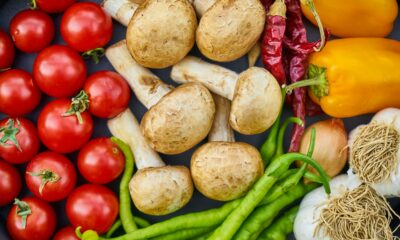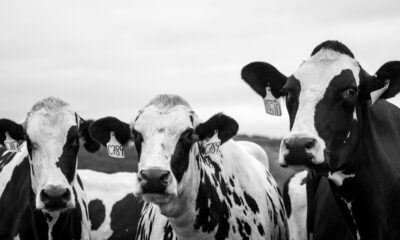Published
6 months agoon
By
zaghrah
South Africa’s agribusiness sector is still standing tall—but with one eye on shaky ground. The Agribusiness Confidence Index (ACI), a key barometer of mood in the industry, dipped slightly in the second quarter of 2025. The index dropped five points to 65, following a promising uptick earlier this year.
While a score above 50 signals optimism, the dip underscores the growing unease in certain pockets of the sector.
According to the Agricultural Business Chamber of South Africa (Agbiz) and the Industrial Development Corporation (IDC), the drop reflects persistent worries among farmers and agribusiness leaders. Unpredictable global trade dynamics, geopolitical tensions, and a troubling resurgence of animal disease—particularly foot-and-mouth disease in the livestock sector—are among the key pressures.
“Sentiment among red meat producers in particular deteriorated,” Agbiz noted, a trend that tracked with a five-point drop in turnover and net operating income subindices.
But this isn’t a panic. The ACI’s current level of 65 still shows that agribusinesses believe in a rebound—albeit an uneven one.
Perhaps the biggest eyebrow-raiser in the data was a 40-point plunge in the export sentiment subindex, which fell to 60. On face value, that sounds alarming. But Agbiz was quick to note that this is more of a normalisation than a red flag.
“South Africa’s agricultural exports reached $3.36 billion in Q1, up 10% year-on-year,” the group explained. “So the decline in sentiment reflects an adjustment from an unusually high base, not a collapse in exports.”
That said, the fragile state of global trade—complicated by wars, protectionism, and shifting alliances—continues to weigh heavily on minds in the sector.
Not everything is gloom and doom. Respondents praised improved port operations—critical for keeping exports flowing and stronger summer rains, which have buoyed general agricultural conditions.
Subindices measuring capital investment (75) and overall agri-conditions (80) held firm, a sign that many farmers are still planning for the future despite current headwinds. Even the employment subindex stayed flat at 55, pointing to relative labour stability.
Interestingly, the financing costs subindex rose by 10 points to 85, surprising analysts who expected interest rate cuts to ease conditions.
“This suggests that some farmers, especially in livestock are still feeling the pinch from past seasons,” said Agbiz, adding that disease outbreaks are likely amplifying financial stress in certain regions.
The debtor provision for bad debt stayed flat at 50, implying that while pressure exists, it hasn’t escalated into a broader debt crisis at least not yet.
Agbiz chief economist Wandile Sihlobo sees hope, but with a dose of realism.
“The mood is upbeat,” he says, “but the recovery will be uneven. Some industries, especially livestock, are clearly under strain from biosecurity threats.”
Sihlobo believes the way forward lies in partnerships between government and private sector—especially when it comes to improving biosecurity, port logistics, and implementing the Agriculture and Agroprocessing Master Plan (AAMP).
He also stressed the importance of export market diversification, highlighting opportunities in China, India, Saudi Arabia, and Egypt, while cautioning that South Africa must fiercely protect access to existing markets in the EU, UK, and across Africa.
The second-quarter ACI shows a sector in motion, navigating a storm of local and international challenges while clinging to hard-earned resilience. Despite the slip, South Africa’s agribusiness industry still sees room for growth—provided it tackles disease, manages financial stress, and keeps the borders open for trade.
And with more than 400,000 people directly employed in agriculture and millions dependent on its value chain, whether the sector thrives or dives matters deeply—for farms, families, and the national economy alike.
{Source: Engineering News}
Follow Joburg ETC on Facebook, Twitter , TikTok and Instagram
For more News in Johannesburg, visit joburgetc.com


Border Closures on the Cob: Botswana’s Sudden Veggie Ban Squeezes SA Farmers


A National Fightback: Government Launches Mass Vaccination Against Devastating Foot-and-Mouth Disease


From American Uncertainty to Asian Opportunity: How BRICS Is Becoming a Lifeline for SA Farmers


All Hands on Deck: South Africa Launches Its Largest Ever Foot-and-Mouth Vaccination Campaign


A Sigh of Relief for SA’s Sugar Belt as Government Holds Off on Tax Hike


Beyond the EU: South Africa’s Subtropical Fruit Sector Eyes a Global Boom















